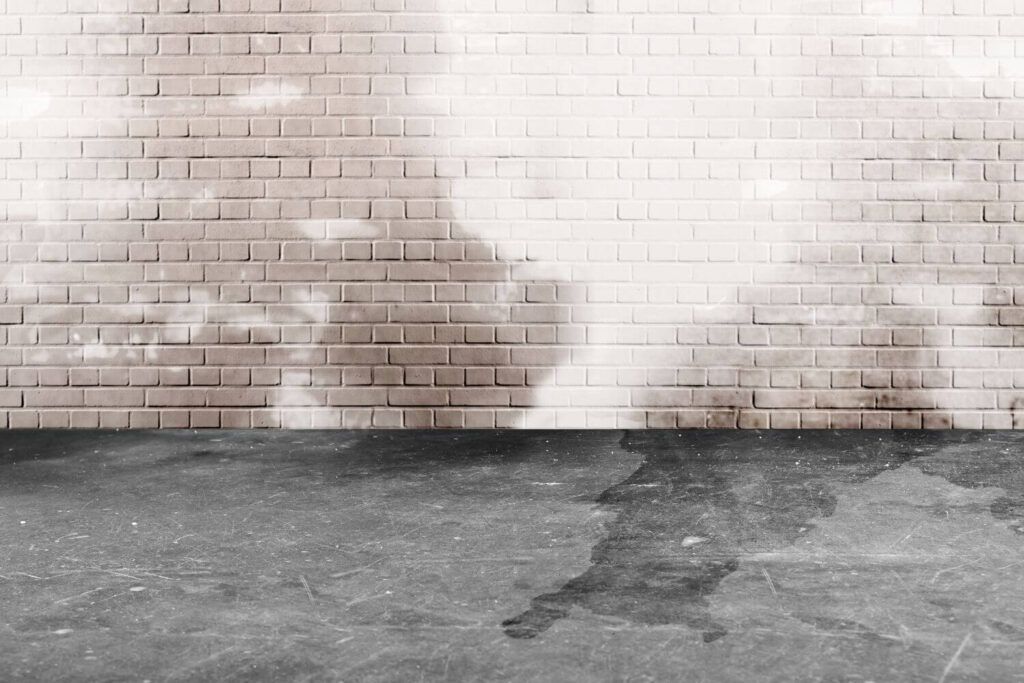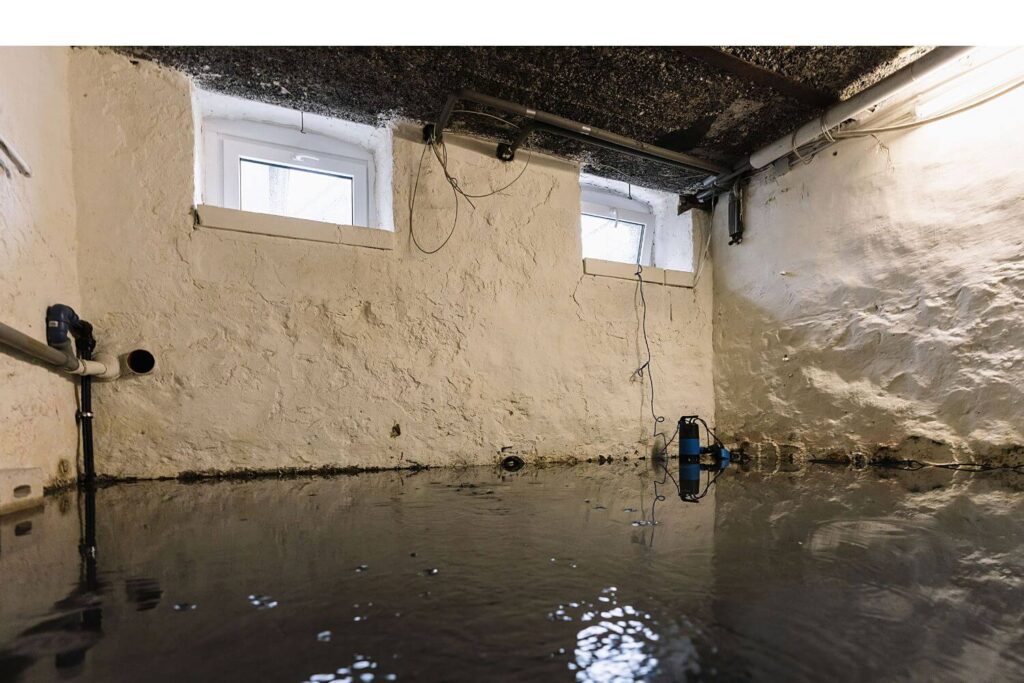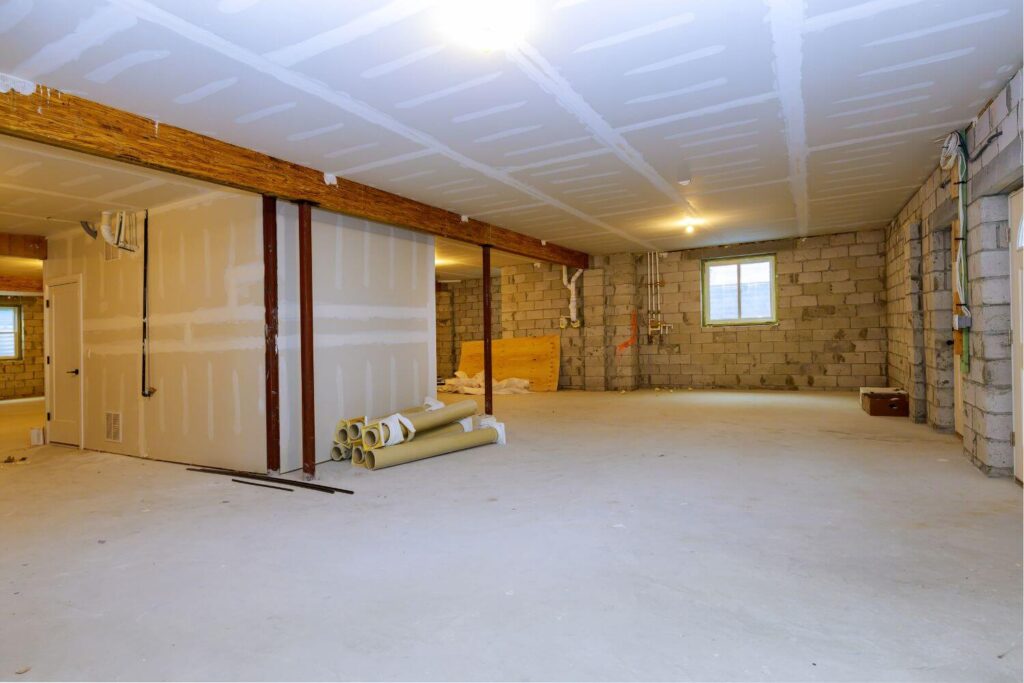Uncontrolled hydrostatic pressure endangers your basement walls and the home they support. Soil pushes against those walls from the outside, which your basement has been designed to withstand under normal conditions. If too much moisture builds up in that soil, however, it swells and becomes heavier, increasing hydrostatic pressure. Professional waterproofing, basement wall anchors, and other mitigation strategies can help prevent foundation damage that leads to big repair bills for your home.
What is Hydrostatic Pressure?
Technically, hydrostatic pressure is the force a given volume of water exerts against an object just by standing still–it’s water pressure without a current. When the land your home sits on was prepared, your contractor excavated space for your foundation, built the basement, and then backfilled the area around its walls. Properly done, this creates the support your foundation needs for longevity while allowing for natural drainage that prevents a build-up of the hydrostatic pressure around the basement walls under ideal conditions.
The problem is that excavation and backfill aren’t always done properly, and conditions won’t always be optimal.
What Leads to Increased Hydrostatic Pressure?
Hydrostatic pressure builds when the soil around the home becomes oversaturated or traps too much water in voids under the ground. It can also increase as temperatures fluctuate and be affected by big changes to your landscaping.
- Clay Content – Compared to sandier soil, high-clay compositions absorb and hold far more water. As the clay becomes saturated, it doesn’t just become heavier. It expands, pushing against the soil around it and your basement walls.
- Improper Backfilling – When the excavation around your foundation is backfilled, it needs to support your foundation walls and let moisture drain away from them. If there are too many voids from underfilling, the material is packed too tightly, or the backfilling is uneven, it can lead to increased hydrostatic pressure.
- Droughts – Extended periods of dryness and heat can leave soil parched and cracked. Once the water underneath has all drained away and water near the surface has evaporated off, it leaves dirt and clay desiccated. Without the soil’s hydrostatic pressure pressing it against the basement walls, small voids begin to form below the surface. With repeated cycles, these voids can become larger and more uneven, making it more difficult for the soil to properly manage moisture when it returns.
- Flooding – Flooding introduces more water to already oversaturated soil, immediately increasing hydrostatic pressure around your basement. This water can also carry away soil as it shifts underground voids on its way to eventual drainage, creating new voids and instabilities.
- Freezes – When water freezes, its volume increases by almost 10%. This pressure forces soil to shift, leaving voids when the water eventually thaws and drains.
- Landscaping – Landscaping should aid drainage and stabilize soil. When landscaping is removed or dies, it can leave voids and disturbed soil, which increases the risk of oversaturation and voids that lead to increased hydrostatic pressure.
The Risks of Extreme Hydrostatic Pressure
As the pressure pushing against your basement walls rises due to increased weight and volume, you can start to see symptoms of uncontrolled hydrostatic pressure. If left unmanaged, those symptoms can soon begin to cause damage that could escalate into destruction.

- Seepage – Concrete is porous, and rising hydrostatic pressure can force water through these tiny pores. Wet patches on concrete with no apparent source can often be the first sign of potential trouble.
- Cracked Walls – As water forces its way through the concrete, the combination of pressure and nature’s solvent can cause cracks to form. This creates space for more water to flow, widening the cracks further.
- Flooding – A flooded basement caused by water infiltration through pores, cracks, and joints indicates an immediate need for help managing moisture and keeping your foundation protected.
- Bowing, Leaning, or Pulling Walls – In extreme situations, hydrostatic pressure on the basement walls can cause them to shift or break. Walls might bow inward along a large crack, lean ominously into the basement, or start to pull away from each other or the floor at corners. This dramatically impacts your foundation’s stability, and professional help is needed immediately.
Protecting Your Home
Preventing damage to your basement from hydrostatic pressure means proactively waterproofing it, responding quickly to any warning signs of pressure build-up, and addressing damage immediately when it occurs.

- Basement Waterproofing – A comprehensive basement waterproofing strategy will help you identify risk factors and mitigate them beforehand. From sealing the basement to installing interior drainage that collects water and moves it out and away from the home, it’s the best first step toward keeping your foundation healthy.
- Drain Tile System – To help provide plenty of drainage around your foundation, perforated pipes are installed around the foundation footings to collect moisture and move it away from the walls of your basement before hydrostatic pressure can build up.
- Wall Anchors – Made from American steel, plates on the inside of your basement walls are connected by threaded bars to anchor plates placed in stable soil away from your home. As the threads are turned, these anchors transfer the load from your basement walls to undisturbed soil. This can not only protect your walls but also return leaning and bowed walls to plumb.
- Remedial Excavation and Filling – In extreme cases, the land around your foundation may need to be re-excavated and filled back in properly with a substrate that promotes better drainage. This can be done separately but will often be combined with the installation of a drainage system to ensure your foundation’s security for years to come.
Get Your Free Basement Inspection
There’s no cost or obligation to get your basement and property inspected by an experienced foundation specialist. Schedule an appointment, and a member of our team will visit your property, identify risks your foundation faces, evaluate any damage, and customize a quote that lays out your foundation restoration and protection options. Get the peace of mind that comes from controlling hydrostatic pressure around your basement walls with professional waterproofing and foundation repair services. Request a quote from A.M. Wall Anchor & Waterproofing today.

